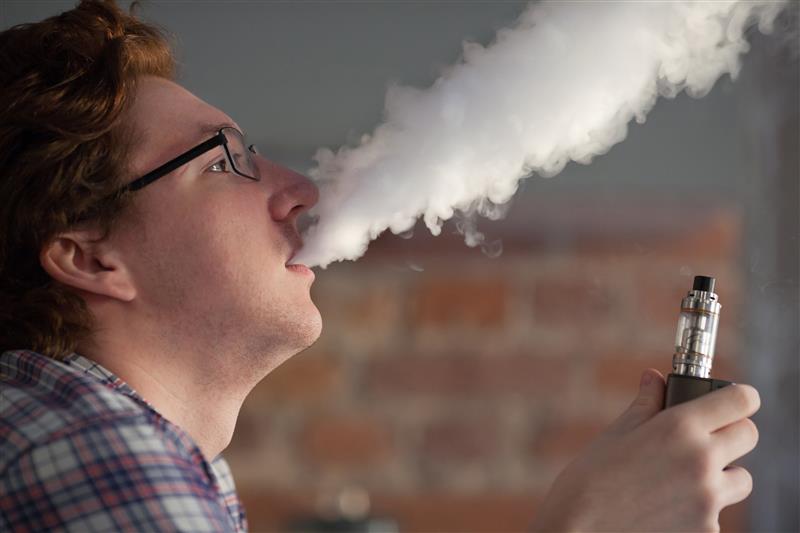In Australia and other countries, the number of teenagers using e-cigarettes, or vaping, is increasing at great speed. Evidence suggests that vaping has detrimental effects on e-cigarette users’ mental and physical health. Student vaping is becoming a bigger problem for schools, impacting student safety, health, and the classroom atmosphere as a whole. Vaping is very appealing to young people for a variety of reasons, including enticing flavours, stylish designs, focused marketing, and peer pressure.
As the Centres for Disease Control and Prevention estimates that 1.63 million middle and high school students currently use e-cigarettes, it’s high time every institution should focus on this issue. In this blog, we will look into important factors related to vaping, its harmful effects on students, and, most importantly, techniques to stop it effectively.
What is vaping?
Vapes, also available in the market as e-cigarettes, are basically battery-operated devices that produce an aerosol by heating liquid cartridges. The user then inhales that aerosol into their lungs. Using or “smoking” an e-cigarette is known as vaping. The liquids in vapes are flavoured with a variety of user-pleasing flavours, including vanilla, menthol, lollies, and strawberries. Nicotine and harmful substances like formaldehyde, acrolein, or propylene glycol may be present in e-cigarette liquids.
How did vaping become popular?
Let’s look at some of the aspects that are responsible for making vaping a popular choice-
# Flavour and Design Appeal
Young users are especially drawn to vaping products because they are frequently marketed with alluring flavours and stylish, covert designs. The appeal of vaping to teenagers is greatly influenced by flavour options, such as fruit, mint, candy, and dessert.
# Safety Perception in Relation to Conventional Cigarettes
Vaping is seen by many teenagers as a safer option than traditional smoking. Despite mounting evidence of the adverse health effects of e-cigarettes, such as nicotine addiction, cognitive decline, and respiratory problems, this misconception still exists.
# Advertising to Adolescents
Brands of e-cigarettes use focused marketing techniques to appeal to young consumers. These businesses present vaping as hip, young, and socially acceptable through vibrant packaging, influencer collaborations, and advertisements on well-known social media sites.
What are the possible reasons for vaping in students?
The main reasons for vaping among adolescents could be –
- Either because they like the social aspect of vaping with friends or to blend in with their peers and social circles
- To try something new or to rebel
- To relax, “escape their problems,” or lessen or control stress and anxiety
- For the enjoyment, amusement, and flavour
What are the negative effects of vaping on teenagers?
A closer look at the negative impacts vaping can have on students are-
i. Addiction to Nicotine Develops Rapidly
Teens are particularly vulnerable to addiction because their brains are more sensitive to nicotine. After becoming addicted, it’s hard to stop using nicotine, which frequently results in problems for the rest of one’s life.
ii. A Higher Chance of Mental Health Problems
Vaping has an effect on mental health in addition to physical health. The use of nicotine by adolescents has been connected in studies to increased rates of mood swings, anxiety, and depression.
iii. Lung Health Damage
Despite the fact that vaping is frequently promoted as a “cleaner” option to smoking, inhaling aerosolised chemicals can actually damage lung tissue. Some teenagers have a persistent cough and sensitive vulnerability to lung infections.
iv. Adverse Effects on Academic Achievement
Teens who are addicted to nicotine may find it more challenging to concentrate in class. The need to vape throughout the day, cravings, and withdrawal symptoms can interfere with studying, resulting in lower scores and affecting academic performance in general.
v. Increased Risky Behaviour
Increased impulsivity and risk-taking behaviour can result from nicotine addiction. According to studies, teens who vape are more likely to partake in other risky behaviours like substance abuse, careless driving, or making poor social decisions.
Five ways to stop vaping in schools
A variety of tactics that address both personal behaviour and more general environmental factors are needed to stop vaping in schools. Here are five practical tips-
1. Campaigns for Education and Awareness
Develop educational initiatives that educate employees and students about the dangers of vaping and its effects on their physical and emotional health. Presentations, informational materials, and guest speakers are all possible components of these campaigns. Make sure teachers know how the devices appear so they can identify them and talk to the students about the problems.
2. Establishment of Vape-Free Policy
Implement strict anti-vaping school policies, including sanctions for offenders. Regular enforcement makes it abundantly evident that vaping is not allowed on school property. Install vape detectors in strategic locations, like restrooms, to aid in law enforcement. Establish a rule that prohibits vaping devices on school property and take them out if they are discovered there.
3. Monitor Through Digital ID Card
Technology can play an essential part in preventing vaping in schools. A digital ID card can help track student movement and restrict access to certain areas where vaping is more common, such as bathrooms or secluded hallways. Schools can incorporate features that let staff keep an eye on students’ whereabouts and send out alerts if they are repeatedly found in restricted areas by using a digital ID card app.
4. Parental Participation
Parents and guardians should be involved by educating them about the risks associated with vaping and urging them to have conversations with their kids about it at home. It is crucial to equip parents with the knowledge and skills necessary to talk to their kids about the problems, comprehend the dangers, and recognise the warning signs of vaping.
5. Programmes for Peer Assistance
Give students access to peer support groups where they can talk about their vaping experiences and exchange advice on how to stop and support one another. Incorporate talks about vaping into tutorial sessions or life lessons like PHSE programmes. The intention is to teach the students that vaping carries some risks.
Conclusion
Vaping in schools is a severe problem that has an impact on students’ general well-being, academic achievement, and health. To stop this expanding issue, schools must take proactive steps like stepping up supervision, educating students, offering resources to help them quit, and utilising technology.
To digitalise each school and improve the overall management system, contact the professional digital ID card maker, Chamera, today.






